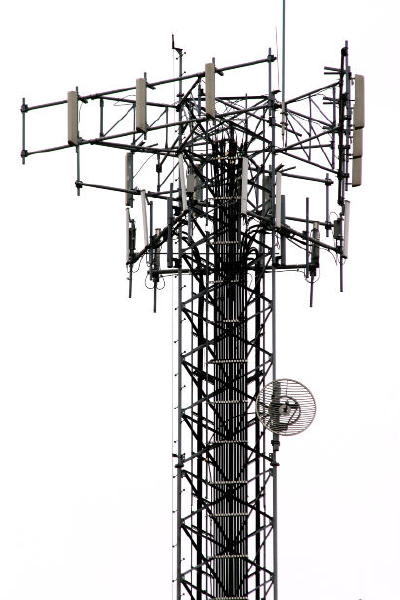-
- 21
Jun - (0)
Why Facebook?
I guess I just didn’t ask.
That’s a great sin in my business, and probably in my life, and I’m guilty. This publication is available on Facebook when you “friend” MentalHelp.net Click on the Facebook icon. I never saw the value and never thought to ask what it was, simply because the guys at MentalHelp.ne o a great job, and my site, www.mindhealthbiz.com receives a respectable number of monthly visits (thank you so much!). So, since things are so ducky and I’m always seeking more exposure, I’m asking now, “Why Facebook?”

Recently I stumbled on a reason: Facebook pages can receive more hits than my regular website. This is according to The Social Doctor. Who knew? Evidently my friends at MentalHelp.net did, and I never asked about it when I saw they’d started a presence on Facebook.
So, businesses have been creating business presences on Facebook for at least a couple years. In 2009, GIGACOM shared how to be effective with this level of marketing. What this means is that over the past two years, businesses have been leveraging this additional way to interact with customers, consumers, professionals and prospects and at the same time, register “hits” on the web, which equates to a more popular web presence, which is good. Hits look good to marketing types, interacting with customers pleases other corporate types who actually know that the customers, consumers and professionals counts, so Facebook for business makes sense on multiple levels.
Not to mention, it’s a nifty way for consumers to have a closer relationship with all my professional peers on MentalHelp.net.
Google has so many features that tell me about me, it’s almost scary. I’ve made my bed, though so I guess I’ll accept that…the problem comes in when that other Terry McLeod comes into the picture that has nothing to do with MindHealthBiz. These days the search engine seems to be doing a better job of weeding that guy out of searches for my site. Another feature is that cool magnifying glass to the left of the search item that pops up a view of the page associated with the link. But wait, there’s more…Google asks if you want to see more of the site, or similar to the site, or sub categories available on that site, like specific posts to a blog. All very cool. As a novice, it’s easy for me to ask “Where’s the linik to the Facebook pages in all those listings of me?” The first thing that comes to mind is that a respect for privacy stops that coverage for personal accounts, but what about business pages? Just because I can’t find them in Google doesn’t mean they’re not there. I just didn’t see them.
Although I had a long career in software manufacturing, developing some technical and software expertise, I still had to search “MentalHelpNet Facebook” to discover the link to that place. This tells me that the best way for my business to interact with folks on Facebook is through that little Facebook icon. I think this would take a while to build up any regular traffic to the Facebook business account. I must be missing something. It only makes sense that both the business website and the Facebook business account should come up in the search engine when I enter the business name.
Assuredly, this is a result of user error or neglect on my part.
So, the answer for MindHealthBiz and Terry McLeod is continued research to clear up too many questions about this technology. I will likely find the answers only by starting a business account on Facebook, for which there are directions.
Read more → - 21
-
- 13
Jun - (0)
Document Image Management
Boy…that sounds boring.
I suppose it could be for those not interested in the Electronic Health Record (EHR), and for those who are interested, innovations to what Document Management is, its value in treatment, and what it could mean in the future, this is a pretty good topic. Consumers and professionals need to be aware of the consumer’s record and how information becomes part of that record.

Recently I shared about Health Information Exchanges (HIEs) (see my last post). HIEs and Document Imaging can be viewed as two sides of the same coin. HIEs share data electronically without a document ever having to be printed, while Document Imaging is generally an electronic copy of a printed document.
John Mancini, president of the Association for Information and Image Management, has opinions about the insufficiencies of the EHR based on personal experience, as well as his own expert opinion. I love to take exception to an expert opinion, and still I’ve seen tremendous movement toward scanning outside documents into a consumer’s EHR. Most mental health and addictions treatment software manufacturers have or plan to have built in technology to include scanned documents from outside sources like labs and other professionals. They even interface to document imaging systems created for multiple departmental environments like hospitals. I imagine it is common enough for a private practice to rely on the paper chart, and certainly our industry hasn’t become fully acclimated to the EHR. Implementation of the EHR has, however been on the increase, and there’s a deadline. The commandment is for professionals to be operational on the EHR by 2014. Originally envisioned in the Bush era as a primary task that would be nothing but good for healthcare in the United States, this goal was reiterated by president Obama when he took office. Both Document Imaging and HIEs contribute to a consumer’s electronic record.
Along with document imaging capabilities, I commonly see software interfaces to labs and pharmacies required as part of the purchase of an EHR. Interfaces to electronically share data are big business, and can be expensive. Without stimulus funding in the form of Meaningful Use incentives, professional organizations in our industry can lag behind the requirement, simply because they can’t afford it. In our sector of healthcare, some professionals rely less on labs and pharmacies than others, so they may not have enough data volume to justify an interface…in some cases the cost outweighs the benefit. Other professionals may see the value in having the data on the computer, and can’t see that interfacing to these ancillary providers will even be used when they have a printed lab report that all the professionals in the organization are used to.
One thing is certain; searching for a paper document can slow down service for the consumer, and is where document imaging comes in handy.
In a computer, each consumer is assigned a number, and that number is likewise associated with the lab results and pharmacy orders or other document when scanned into the computer’s secure database.
If a consumer comes to a professional with a referral from another facility, or an existing consumer returns with a discharge summary after a stay in the hospital, the associated documentation can be electronically attached to the consumer’s record number, with a link or command button available in the consumer record that pops the lab results or list of currently filled medications to the screen.
My last post discussed how Health Information Exchanges (HIEs), which eliminate the need for a provider to scan and attach these types of data to the consumer’s record by making them available electronically: • Current demographics • Diagnosis treated • Services rendered • Medications prescribed • Admission and Discharge summaries
Whether or not professionals and the organizations they work for will profit from interfaces or HIEs to electronically share data, or be better able to justify a document imaging system, either as an added stand-alone system or one that’s built into their (EHR), is a decision that needs to be made with the consumer’s treatment experience in mind. It’s never a bad idea to chat with a consultant when it comes to determining the better value of multiple technological choices.
Read more → - 13
-
- 07
Jun - (0)
Health Information Exchange
The number one trend in my business, according to Healthcare Technology News will be the growth of Health Information Exchanges (HIE).
We’ve known the importance of electronic sharing of patient data for decades, and these days the hesitancy we felt in the past has become an obsolete emotion. With the advent of HIPAA and its embracement by forward moving legislation as well as new technologies, confidentiality is better assured than ever before.

In mental health and addictions treatment, there are a number of elements of patient data that can be shared that provide a number of benefits. Mistakes are fewer and efficiency is increased on the data entry side of recordkeeping. Treatment can be improved with a broader knowledge of the consumer’s healthcare events and who’s been treating them lately. Conceivably, when a billing address changes, the HIE could assure all professionals in the neighborhood treating the consumer have the most recent information. Professionals have dreamed of having access to few key types of data that multiple agencies treating a consumer might need in order to effectively treat the patient: • Current demographics • Diagnosis treated • Services rendered • Medications prescribed • Admission and Discharge summaries
Now, these elements are available through HIEs..
I am increasingly impacted by the success of HIEs When I was hospitalized a few years ago, and after discharge treated by a couple specialists within the hospital’s network of associates. I was very happy not to have to fill out so many pieces of paper, so somebody else could enter that data into the computer. It was already verified as correct while I was in the hospital, and immediately available to the specialists as soon as I’d signed a Release of Information (ROI).
This is the essential nature of other sorts of consumer data exchange networks, like a Regional Health Information Organization (RHIO). There are many examples as this model is based on a local network of providers….there tend to be a bundle of different solutions where the need seems to support them, and that’s the case with sharing health information. Usually providers pay to become a member of the RHIO, and they will be able to see other local providers’ information like the elements listed above for a specific consumer. I share the opinion of some experts in the field that eventually all these networks will be joined together by the states, and ultimately the feds to finish creating the National Health Record that was mandated back in the Bush era.
I also agree with Adam Gale, president of KLAS, that with all that availability of data we should wonder what it’s being used for…Is the HIE matching patient addresses with their diagnosis in order to sell a list to a major anti-depressant manufacturer? It’s not likely, and that line of questioning is certainly valid for providers joining an HIE.
Conceivably, the value of the access to patient data should exceed the cost of belonging to an HIE. Will the government mandate for all patient care to be recorded in the EHR include the HIE? Testing the wind and laying out an opinion, I’d say it’s a great goal to have the consumer-authorized availability of information among providers, and for the most part that’s happening…it may take a few extra years get the EHRs connected, simply because the technology to make the secure connection, the mapping of the data from an existing EHR to the format needed by the HIE, and other technical concerns add up to a significant price tag.
Read more → - 07
-
- 02
Jun - (0)
Say It With Pictures…
I heard from a fellow in The Netherlands recently, Erwin van der Hout, who has an intriguing product on the market to facilitate better, more constant communication between consumers and professionals. iPicto is an app for the iPhone that enables these folks to communicate via pictograms.

It turns out that folks diagnosed with dementia, autism, and Asperger Syndrome type memory/brain disorders warm up quite nicely to communicating with pictograms, and iPicto seems to be a good tool for this application. I guess the value in this type of communication tool has been known for quite some time. Van der Hout’s product delivers hundreds of expressive pictograms literally to the user’s fingertips, since they hit the iPhone, and the app enables selection of the pictograms for Email communications. In our Email Interview, van der Hout shared that his research indicates success in using pictograms for communications of this type not only in clinical environments, but also for parent/child communications…the books on his website were not in English, and I’m challenged that way, so I can’t personally back him up in this matter. Perhaps if you can read in German, you can check out the link above to his website and comment on his references to help clarify this.
In spite of how that may sound, I’m all for better communication, as long as it meets the patient information security rules we need to live by. Pictogram communication could be quite effective for people with serious mental health issues, and ultimately make a number of people’s lives happier. The pictogram libraries would be uploaded to the iPhone and iPad, and since there are hundreds, they could prove quite expressive and improve such communications between professionals and consumers.
iPicto on the iPad enables storage of larger pictograms, and as a layman, I could envision using this technology in treatment sessions.
Of course, as with any good idea, kinks need to be worked out. Wouldn’t the pictogram Emails look interesting in the consumer’s Electronic Health Record (EHR)? If you save Emails to that system, check out the record to assure the pictogram actually displays once it’s saved…sometimes that sort of thing is lost in the technical translation.
Lately there has been a ton of buzz about apps for your SmartPhone, and recently I shared that it’s getting easier to find apps and methods to increase security on the SmartPhone. I’ve made other excursions into this world, discovering ACHESS, an app for addiction treatment for which the manufacturer shared their security measures, and after talking with the ACHESS manufacturer, the security seemed good for our purposes. The industry is taking steps, and is closer to secure communications between consumers and professionals, as required by a number of rules that are ultimately rooted in HIPAA requirements. At this point, if you plan to engage in consumer/professional communications with iPicto, you’ll need to take your own security measures. A number of solutions are cropping up, and security opinions abound. Among all those claims and the new technology, I continue to make the same suggestion: consult a professional prior to sharing consumer data on a SmartiPhone, even if it’s with the consumer.
Read more → - 02
